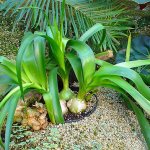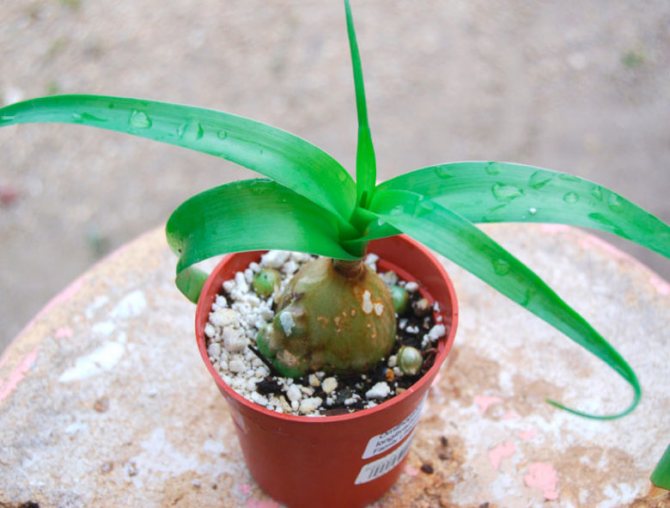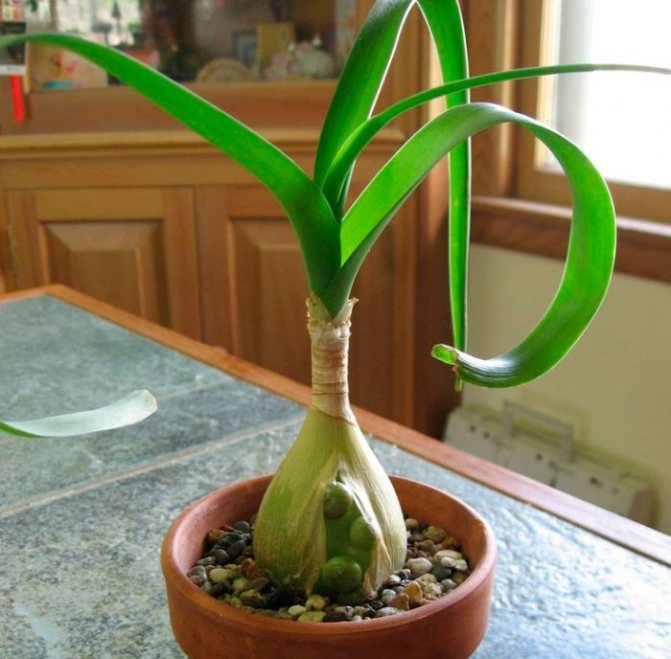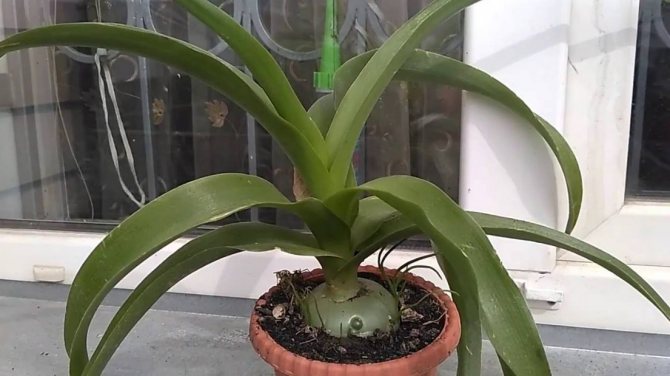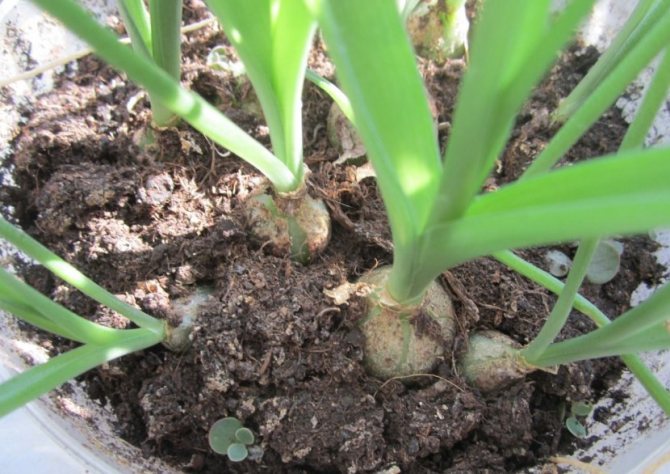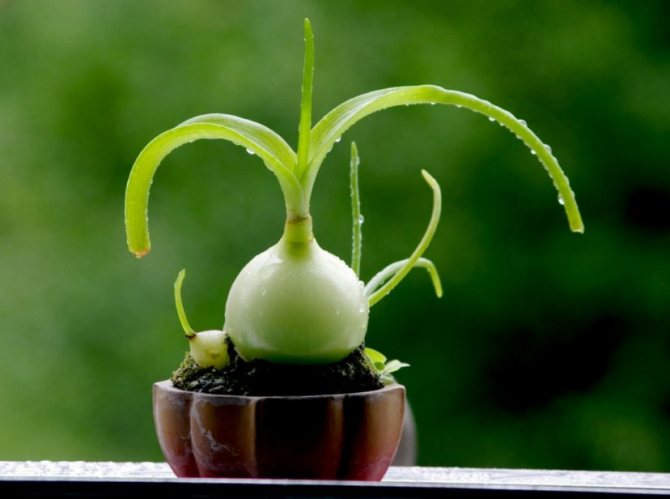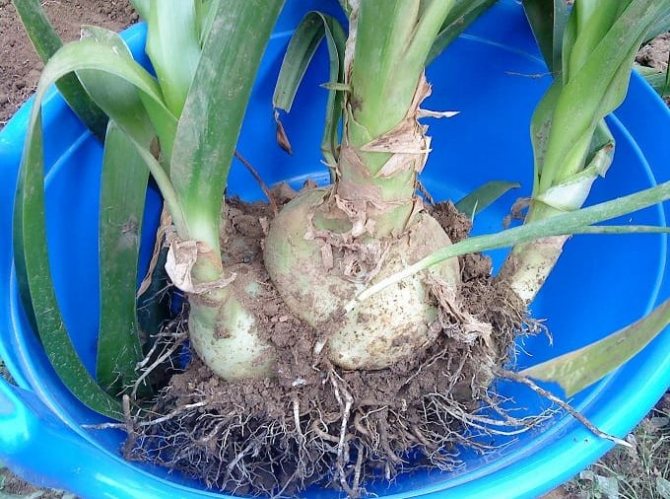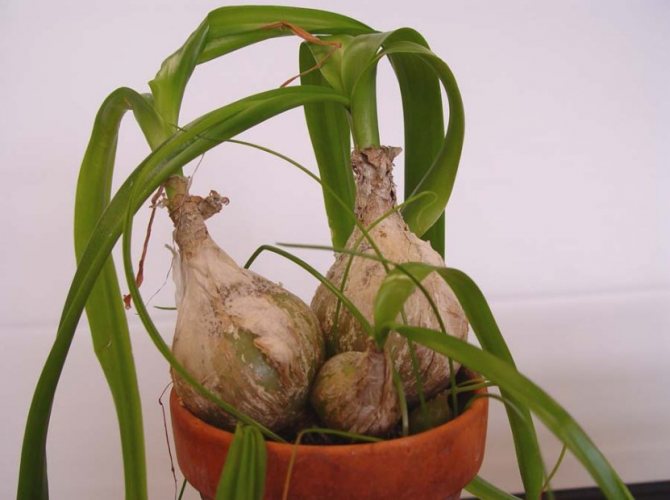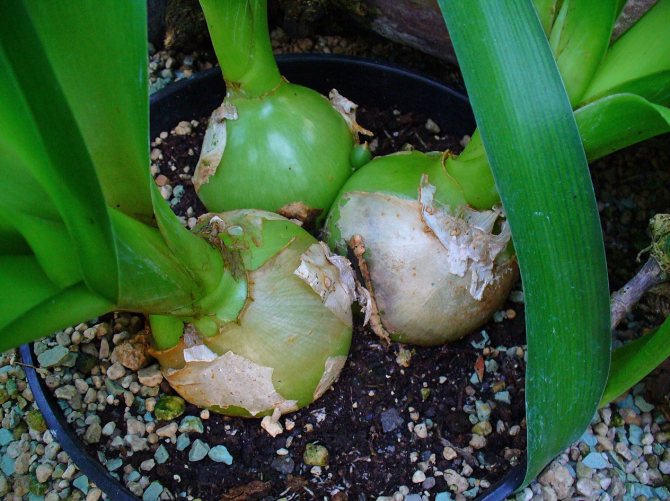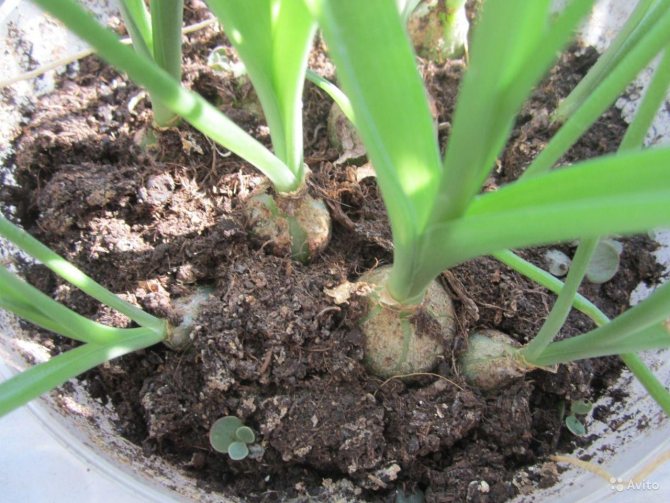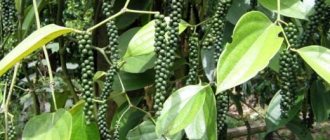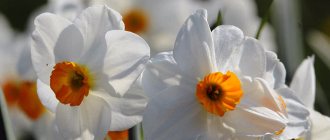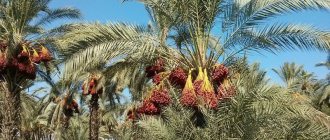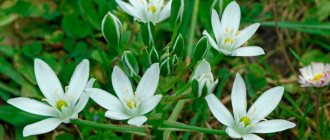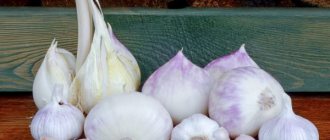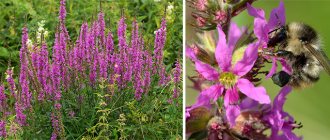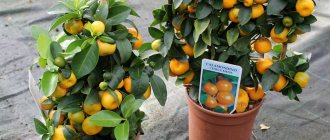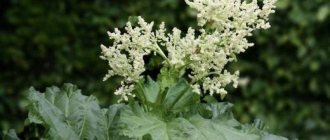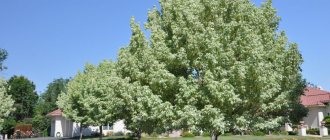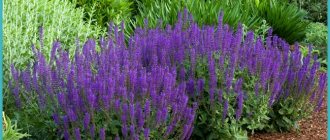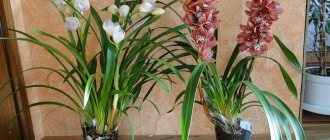Those who are engaged in folk medicine know what the Indian onion is and what medicinal power this amazing plant has, which came to us from the hot African continent, and also grows freely in India, China and the Mediterranean. Many healers call an exotic bow a magic healer, a panacea for many ailments of the musculoskeletal system, in the treatment of which he has practically no equal. And not only the musculoskeletal system, but also other diseases. The most remarkable thing is that this unique plant, which is a whole medical laboratory, is very easy to grow not just anywhere, but on your own windowsill.
What is an Indian onion (ornithogalum, tailed bird)
Nobody knows why the Indian bow is so called. After all, he came to Russia far from India. And it is called onion only in our country. Most likely due to the fact that a burning juice flows in its leaves, similar in pungency to spices from India.
Indian onion is the "folk" name of the plant. People call it Chinese, Tibetan, Japanese, Mongolian bow or brandy. Science it is known as ornithogalum or tailed bird house. The name comes from the Greek words "ornis" - bird and "gala" - milk. The name of this plant can be translated into Russian as "bird's milk"... Most likely, it was named so because of the color of the flowers.
- In English, because of the flowers in the shape of stars, the Indian onion of the birdhouse received the beautiful name "Star of Bethlehem" - "Stars of Bethlehem".
- And in Germany this plant is called "Milchsterne", which in translation into Russian sounds like Milk Stars.

Indian bow
Why is Indian onion so useful? It is believed that the poultry farm attracts happiness, harmony and love to the house. And if you put a pot with a plant in the workplace, then soon your career will go uphill.
But most of all, Indian onions are valued for their healing properties. Tinctures are especially widely used in folk medicine.
Plant propagation methods
Rhododendron: what is it, how many blooms in time
Raising an Indian onion baby is easy. The biennial plant is covered with small bulbs. They can be easily separated from the mother plant and rooted. Even if there are no roots on the onion, it will acquire them very quickly.
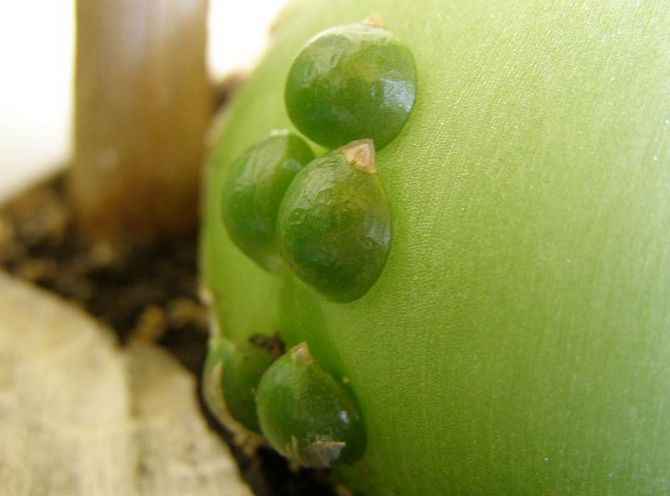

Babies on an adult bulb
You can also grow from seeds. After flowering, seeds ripen in the seed pods, similar to those of ordinary onions. They are sown in a mixture of peat and sand and create a mini-greenhouse conditions. Seed sprouts must be protected from direct sunlight and hypothermia.
In extreme cases, the bulb of an adult plant is cut in half. For this, the green part of the plant is completely cut off. The halves are planted in new pots with renewed soil. At first, development slows down, as the root system grows. But soon the leaves will begin to appear.
Botanical classification and appearance
The Indian onion plant often changed its position in the classifier. Not so long ago, the poultry farm belonged to the liliaceae. Now the clan finally has its own subfamily Poultry family Hyacinths... The number of species described varies depending on who makes the classification. There are approximately from 100 to 300 types... In Russia and bordering countries, you can find about 30 species
- Indian onions grow in height from 30 to 80 centimeters.
- In shape, the bulbs are similar to an egg, covered with scales.
- The belt-like leaves have a light streak in the middle.
- Following the leaves growing from the bulb, a fifty-centimeter peduncle appears.
- In April, at the end of the peduncle, about 20 flowers bloom, resembling stars in shape. They are white or slightly yellowish in color.
- The shape of the seeds is flat, the color is black.
- Indian onions bloom all spring, as well as November and December.
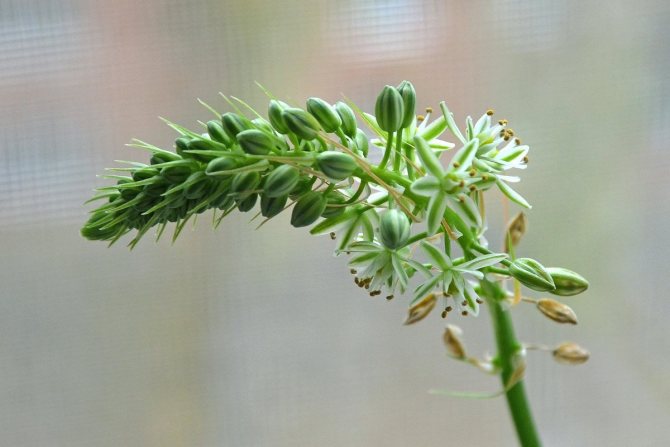

How the Indian onion blooms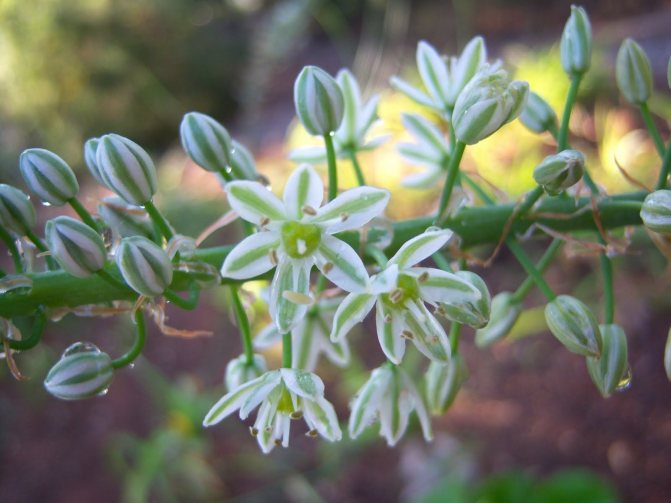

Indian onion flowers
Chemical composition and calorie content
Indian onion leaves contain glycosides, essential oils, organic acids, flavonoids and plant alkaloids such as colchicine, colchicoside, thiocolchicine, glycoalkaloid.
Attention! Due to the content colchicine ornithogalum is considered a poisonous plant. It is not recommended to take drugs from it inside the body. However, for some skin conditions, it can help.
Colchicine has the following properties:
- blocks receptors on the surface of the skin, thereby creating an analgesic effect;
- has an anti-inflammatory effect;
- removes puffiness;
- helps to improve blood circulation by expanding small vessels;
- prevents blood clots.
Other constituents of the chemical composition of the plant provide disinfecting, antiparasitic, regenerating and warming effects.
The calorie content of Indian onions is 40 kilocalories per 100 grams. But since the poultry farm is still a poisonous plant, you should NOT take it inside the body.
Healing properties
The healing properties of the plant are due to its unique and very rich chemical composition. The birdhouse is rich in:
- organic acids;
- glycosides;
- alkaloids;
- flavonoids;
- aromatic acids;
- essential oils;
- microcomponents - gray.
Since the composition of exotic onions is not fully understood, it is difficult to say what else this medicinal plant includes.
Indian onion contains a toxic alkaloid - colchicine, so ingesting preparations based on it is dangerous to health! Only external use of the medicinal plant is recommended!
The poultry garden has the following effects:
- anti-inflammatory;
- antiviral;
- antineoplastic;
- pain relievers;
- antiseptic;
- antimicrobial;
- antiparasitic;
- regenerating;
- anti-gouty;
- warming, etc.
As a remedy for diseases of the musculoskeletal system, it is used for:
- arthritis and arthrosis;
- osteochondrosis;
- gout;
- pinched nerves;
- radiculitis;
- rheumatism;
- salt deposits in the joints.
If your joints react sharply to a change in the weather, then a small piece of a leaf of a plant rubbed into a sore spot will instantly relieve pain. It is better to rub in at night, and the sore spot should be wrapped in a warm scarf.
In addition, Indian onions are recommended for use in cases:
- headaches of various etiologies - migraines, pain in the head with a cold, as well as with an increase in blood pressure;
- mastitis as a compress;
- colds, using the leaves of the plant in the same way as the balm "Gold Star"rubbing them on the bridge of the nose, the spaces above the ears and eyebrows;
- toothacheby applying a leaf of a plant to a sore spot;
- skin diseases, including oncological;
- varicose veins. By applying a compress of Indian onion leaves to the affected area, you can get rid of painful nodes.
The poultry farm is also used in cosmetology.It is used to make face skin products and hair rinses.
With inflammation of the sciatic nerve, homemade rubbing will help, prepared from chopped leaves of Indian onions and comfrey horses (1: 2), infused in 0.5 liters of moonshine.
As a medicine, the leaves of the plant, arrows, the bulbs themselves, and also the juice are used. Ointments, rubbing, infusions, decoctions are prepared from raw materials, which are used exclusively externally or take baths with them. Rubs and tinctures are mainly prepared on the basis of an alcohol-containing liquid (vodka, alcohol, moonshine).
Application in traditional medicine
The tailed bird poultry has many useful and medicinal properties:
- antimicrobial,
- counterintuitive,
- antimycotic,
- pain reliever,
- warming,
- antithrombotic
Due to these properties, Indian onions are widely used in folk medicine. Sore spots are treated with fresh, freshly cut leaves. Ointments, creams, tinctures and masks are made from the rest of the leaves and onion heads.
For sore joints and bruises
For sore joints and bruises, Indian onions are used in the form of lotions or rubbing.
- Onion juice stimulates blood flow and improves metabolic processes in the area of aching joints or bruises, pain goes away and swelling decreases.
- Rubbing in onion tincture for joints reduces inflammation and improves their mobility in osteochondrosis, arthrosis, rheumatism and arthritis.
- Onions remove calcium salts and uric acid from the body, thereby preventing their deposition in the joints.
Tincture of Indian onion for joints:
How to treat joints with Indian onions
For nail fungus
Nail fungus is a fairly common and unpleasant disease. The chances of getting infected is high, because fungal spores are very tenacious.
The antimycotic properties of Indian onions make it possible to use it against various types of fungus, even in an advanced form. Applications, baths and antifungal ointment are made from this plant.
- Applications... Rub a piece of leaf into a gruel, apply it to the affected nail and fix it with cellophane on top.
- Foot baths... Grind the leaves, fill with a liter of hot water and leave to infuse for at least 1.5 hours. Then dilute the infusion with warm water. You can add 30 grams of vinegar (the fungus dies in an acidic environment). Steam clean feet in the bath for 20 minutes, towel dry and put on clean natural socks.
- Antifungal ointment... Mix pounded onion leaves with 10 grams of propolis and 50 grams of lanolin. Put on low heat for 7-10 minutes. Cool it down. Apply a thin layer to the problem area, remove the residue after 20 minutes. Store the ointment in the refrigerator.
With regular use of one of these recipes for 7-10 days, you can get rid of nail fungus.


Reproduction of Indian onions
For skin, mucous membranes and veins
With the help of ornithogalum juice, you can get rid of papillomas and warts.
Warts Is a viral disease. It manifests itself in the form of the formation of dense rough skin nodules of a grayish color on the human body. It is transmitted through household items.
Papillomas Are neoplasms on the skin caused by the human papillomavirus. It is transmitted by contact, from person to person.
To get rid of growths with ornithogalum, you need:
- Put undiluted poultry juice on the wart or papilloma and leave for 10 minutes.
- Then rinse with water.
- The process is repeated every day until the final disappearance of the build-up.
Ornithogalum juice from papillomas is effective and is used in some medicines.
Indian onion masks with the addition of glycerin, it gives a fresh complexion to the face, lightens skin pigmentation and smooths out fine wrinkles.
With the help of a Chinese bow, you can remove heel spur... To do this, chop the onion leaf, grate one potato with the peel and mix the two resulting masses. Spread the mixture over the gauze, then put on the spur and tied with a bandage. Cover the top with a plastic bag or plastic wrap. Put on a warm sock over the film or wrap your leg with a blanket. Keep the compress for 24 hours, then change. After a week of daily compresses, the spur will disappear.
The poultry juice contains natural antibiotic, which helps well with inflammation in the sinuses and throat diseases (tonsillitis, tonsillitis, sinusitis).
The substances in the plant have an anticoagulant effect: they thin the blood and prevent the formation of blood clots.
The healing properties of Indian onions. History. Recipes
Folk recipes
People who are fond of traditional medicine use the poultry farm as a component of various products for external use:
- tinctures on alcohol, vodka, water or kirosin;
- decoctions;
- all kinds of ointments;
- compresses.
Onion juice contains an antibiotic that has analgesic and disinfecting effects.


Indian bow for pain
Alcohol and vodka tinctures
You cannot buy Indian onion tincture in pharmacies, but you can prepare it yourself at home. It will not be difficult to buy the plant itself. It is very affordable and the price of one onion is 150-300 rubles.
To prepare Indian onion tincture you will need:
- Indian bow;
- Alcohol (One part onion to twenty parts alcohol) or vodka (A quarter cup of onion pulp to three quarters of a glass of vodka);
- Cookware with glass or porcelain lid.
Cooking method:
| № | Tincture for alcohol | Vodka tincture |
| 1 | Cut the bottom leaves of the onion | Cut the bottom leaves of the onion or cut the onion into small pieces |
| 2 | Crush in a mortar | |
| 3 | Pour in alcohol | Pour in vodka |
| 4 | Pour into a glass or porcelain container, close the lid | |
| 5 | Insist 10-12 days in a dark and cool place | Insist for a month in a dark and cool place |
| 6 | Strain the tincture and use as directed |
Attention! The use of tincture on alcohol or vodka is contraindicated in children, because can cause allergic reactions or even skin burns.
This Indian onion tincture is effective for treating sore joints.
Decoction
A decoction based on onion leaves is good for rheumatism.
To prepare a broth from a poultry farm, you will need:
- one part finely chopped plant leaves to ten parts clean water.
- Mix the ingredients and cook for 10 minutes over low heat.
- Allow the broth to cool, filter and use under a compress.
- It is recommended to keep the compress for about 25 minutes, at least 12 days in a row.
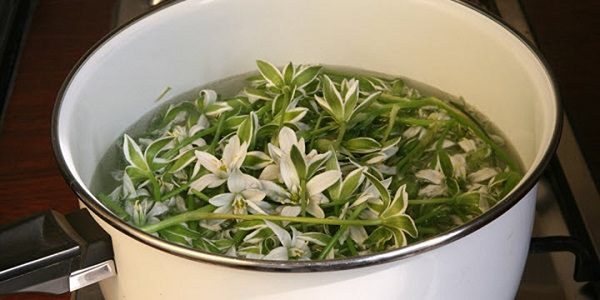

Cooking a decoction of Indian onions
there is another slightly different decoction recipe from Indian onions.
- In the same way, you need to mix the finely chopped leaves of the plant and water.
- Then place the mixture in a water bath and cook for 12 minutes, remembering to stir occasionally.
- After that, filter the broth and cool to room temperature.
- Store the ready-made broth in a container under a lid, always in a room where sunlight does not penetrate.
Traditional healers believe that melt water is much more useful than ordinary water. Therefore, if you have the opportunity, it is better to use such water. But if this is not possible, then you can clean the tap. To do this, you need to take water from the tap into a bottle, place it in the freezer. Wait until the water is almost completely turned into ice, melt it and remove the dirty sediment.
In case of diseases of the oral cavity, a decoction of onion skins helps well. Onion skins can be harvested in sufficient quantity during plant transplantation. It needs to be crushed and boiled in a glass of water. Then leave to brew for 3-4 hours and drain. For rinsing, the broth must be diluted with boiled warm water.
Plant sap
Onion juice is found in the leaves of the plant. It is enough to break the leaf a little and the juice will immediately flow. For medicinal purposes, mature leaves of ornithogalum are used, even slightly dried out. The cut side of the sheet with oozing juice is rubbed with a sore spot or applied to it.
When rubbing with onion juice, different sensations can occur: burning, tingling, tingling on the skin. But the pain goes away quickly enough.
Attention! To find out if you are allergic to the juice, pre-treat a small area of your skin and wait for a while.
Those who suffer from joint diseases are advised to rub the sore spots with a leaf or a piece of onion. Then wrap them in a warm cloth. An unpleasant burning sensation will be felt for a while, but then the pain will go away.
The second way to extract onion juice is to pass the leaves through a meat grinder. It turns out like such a gruel. Then this gruel must be squeezed out through several layers of gauze cloth or passed through a juicer. Then pour the pure juice into a storage container, close the lid tightly and place in a cool dark place. Thus, the juice can be stored from three days to several weeks.
Indian onion juice, unlike potato juice or cabbage juice, cannot be consumed internally
Vaseline ointment with juice
To eliminate the inflammatory process and relieve pain, vaseline ointment with poultry juice is used.
Ingredients for the preparation of the ointment:
- Yarrow tincture on alcohol;
- Tincture of Indian onions with alcohol;
- Petrolatum.
Method of preparation and use:
- Mix alcoholic tincture of yarrow with alcoholic tincture of Indian onions in equal proportions.
- Then add petroleum jelly to the mixture of tinctures in a ratio of 1:20.
- Heat the resulting gruel to a temperature of 40-45 degrees.
- Let the fat freeze.
- Lubricate the back along the spine at night for a week. For the best effect, you can rub in with massage movements.
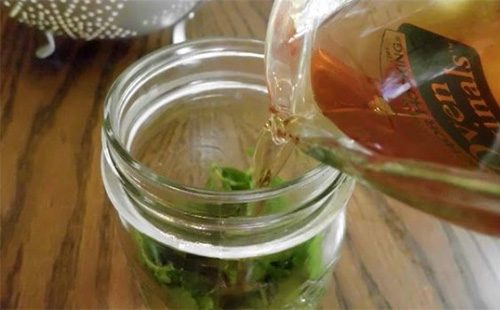

Cooking Indian onion tincture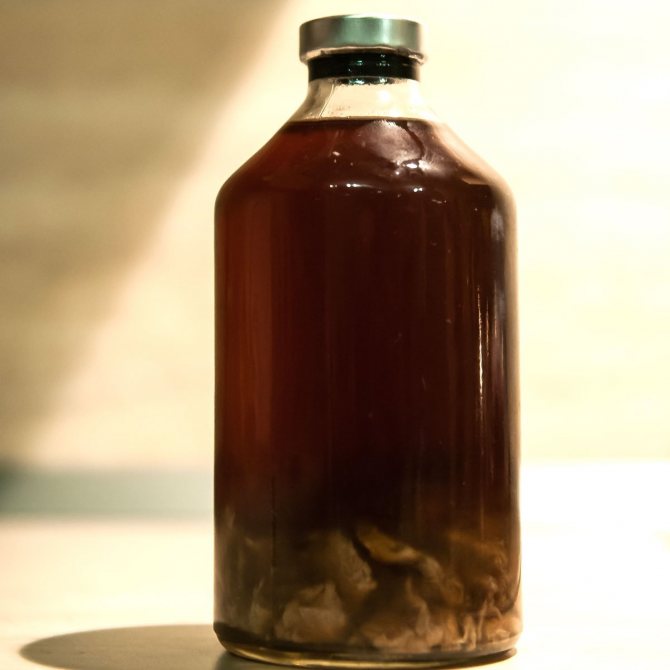

Indian onion tincture
Landing technology
There is nothing difficult in growing Indian onions; not only an experienced florist, but also a beginner can handle it. You just need to know and follow some recommendations. Let's see which ones.
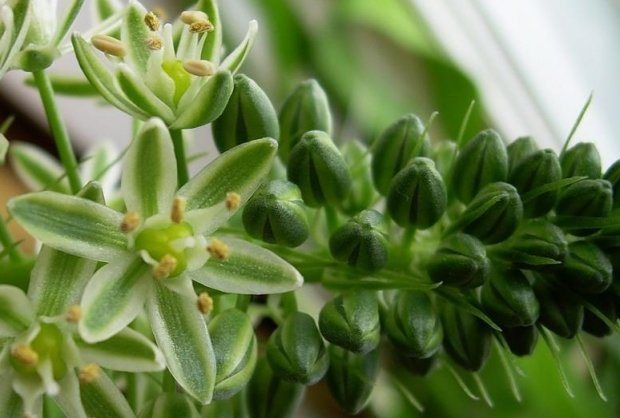

Soil composition
- If the onion is grown indoors, then it is important to prepare such a soil mixture for it: take sand, leafy soil and humus in equal parts. Mix all ingredients well until smooth.
- Some replace humus with sod land, but then you need to take a little more river sand.
Read also: Why the pear does not bear fruit and does not bloom: what to do and the reasons, if young and old
Which pot to choose?
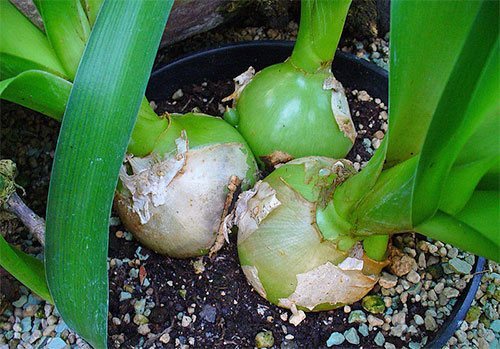

For bulbous plants, including Indian onions, one flowerpot is selected for one bulb. The size is small, since the extra space slows down the growth of a decorative flower with such a structure of the root system.
Experienced flower growers recommend choosing a clay or ceramic pot for Indian onions. It is important that it is stable and does not overturn when the bulb grows and a peduncle with a sufficiently large inflorescence is extended.
Natural material (in this case, clay) has a beneficial effect on the condition of the bulb: excess moisture is not retained, thermoregulation is not disturbed, the right amount of oxygen is supplied. All harmful substances come to the surface of the soil. If the pot is plastic, then all this, of course, does not happen.
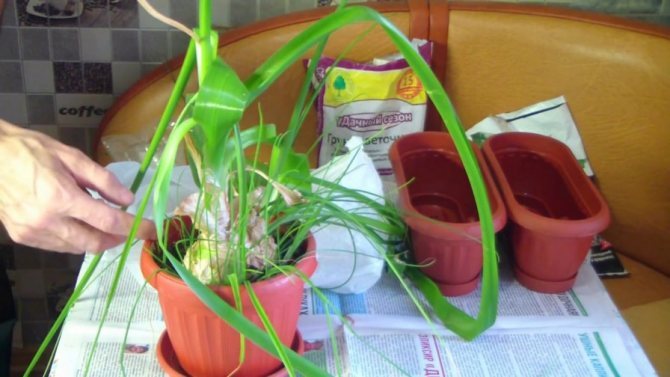

- A drainage layer in the form of expanded clay or small pebbles should be placed at the bottom of the pot.
- Pour in the soil mixture prepared in advance. Then carefully deepen the bulb so that at least 1/3 remains above the soil surface.
- It is important to simply put the bulb on, but not to "screw in", as it is possible to spoil and damage the root processes.Sometimes a plant planted this way can die.
- Since Indian onions live for many years, the bulb grows in size over time. Therefore, it is necessary to periodically transplant. In this case, the pot is taken only one, maximum, 2 sizes larger. Extra space will only hurt.
It is recommended to replant the plant in the autumn. Be sure to loosen the soil regularly around the bulb to oxygenate it.
Contraindications for use and precautions
When applied externally, ornithogalum can be dangerous only with individual intolerance. You should not apply tincture, decoction or ointment from onions to damaged skin. This can lead to severe irritation as it contains alcohol.
The poultry garden is a poisonous plant. Under no circumstances should it be taken orally. This can lead to severe poisoning, flatulence, diarrhea and a decrease in blood pressure.
If, when using the compress, red spots, blisters or itching appear on the skin, the treatment should be stopped immediately. These symptoms indicate an allergic reaction of the body.
Precautions:
- For slicing onions, you should use disposable dishes or one that will not be used for food or food products in the future ...
- Exposed skin needs to be protected from onion juice (it can cause irritation, and in some cases even burn). Wear thick, long-sleeved clothing and gloves.
- If the juice splashes onto the skin, then immediately rinse this area with cool running water.
- After using tinctures, ointments or decoction with onions, hands should be thoroughly washed with soap.
Treatment with Chinese onion is strictly contraindicated in patients with hemophilia, pregnant and lactating women.
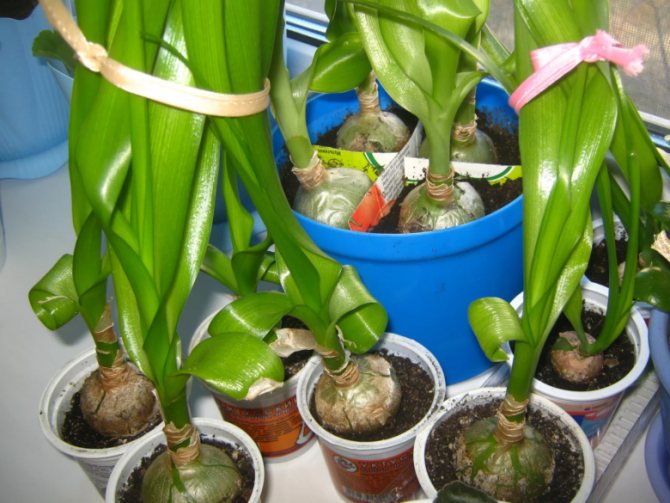

Indian onions grown on the windowsill
Use for decoration of summer cottages
The Indian onion is a very beautiful plant. The leaves have a rich green color and a beautiful elongated shape. Small flowers are collected in a bizarre, graceful inflorescence. It takes root well outdoors in summer. Summer residents often use it to decorate flower beds.
The onion is unpretentious and will feel great in the garden. It can be planted both in the sun and in the shade. Ornithogalum is naturally pollinated and gives birth to many “babies”.
For the winter, the poultry farm should be dug out of the flower bed, dried and removed until spring in a warm, dry place. Or transplant it into a pot and leave it to winter in the room.
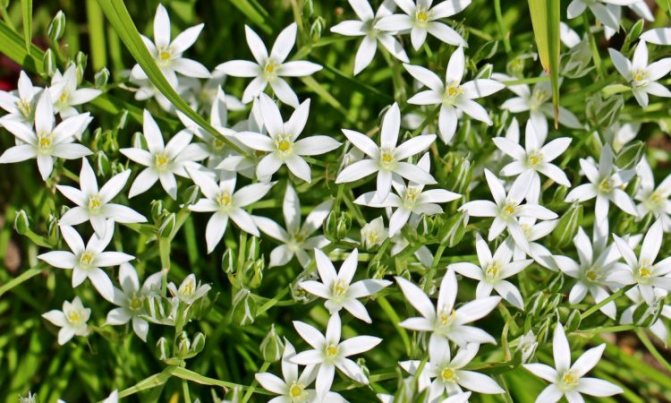

Indian onions at their summer cottage
An unhealthy appearance and wilting rare inflorescences are clear signs that the onion is sick. Most likely he doesn't have enough room to grow. For the plant to be pleasing to the eye again, it must be transplanted, providing sufficient space for growth.
The birdhouse can be attacked by a spider mite, an onion rattle or various types of aphids. But this happens extremely rarely, since onions contain toxic substances and in themselves are dangerous to insects.
In the event of an attack by insects, it is enough to treat the plant with special chemicals.
Care features
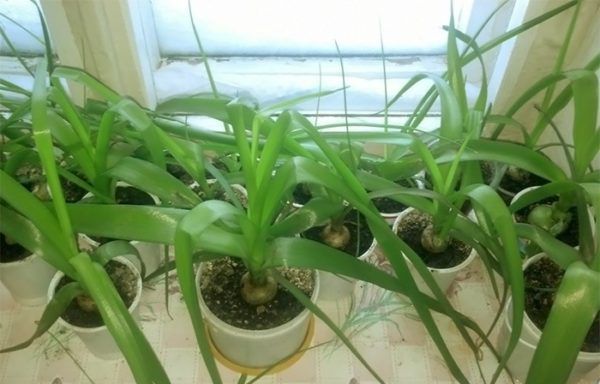

Indian onions require good lighting
Despite the fact that the Indian onion is considered an unpretentious crop and does not require special care, there are a number of rules that must be followed when growing it.
- Lighting. Indian onions are thermophilic plants that require a lot of light and tolerate heat much better than cool. The pot can be placed on the sill of the south or east window so that the leaves are well lit by the sun. Room temperature is quite suitable for growing it, but it is important not to allow the numbers on the thermometer to drop to less than 12 degrees.
- Watering.Watering the poultry farm should be moderate, in summer a little more often, and in winter - only when the topsoil dries out by about 1 cm. The amount of liquid depends on the size of the bulb and the size of the container. Sometimes in winter, watering is stopped altogether - Indian onions can withstand a drought lasting 2-3 months without loss. But you need to spray the leaves regularly - this has a good effect on the condition of the plant. It is better to carry out the procedure in the early morning, so that their surface has time to dry at noon.
- Loosening. For good growth and development, onion roots need normal air exchange, therefore, the soil surface should be loosened once or twice a week.
- Top dressing. It is recommended to feed Indian onions once every 2 weeks from March to August. For this, an infusion of wood ash is used - a tablespoon of powder is infused in a liter of water for a week. It is necessary to alternate such procedures with watering the plant with a weak solution of potassium permanganate.
- Transfer. The culture belongs to perennials (a bulb can grow in one place for 30 years). In order for the plant to bloom and develop, it must be transplanted every two years into larger pots filled with fertile soil.
- Cleaning. In winter, when the air in the premises is dry due to the working heating devices, the leaves of Indian onions should not only be sprayed, but also wiped from time to time. The dust that accumulates on them inhibits metabolic processes and interferes with normal air exchange.
- Reproduction. To obtain seed for propagation of a culture, it must be pollinated. To do this, you can use a brush (hold it one by one over all the flowers) or put a pot with a plant outside the window for the bees to do this.
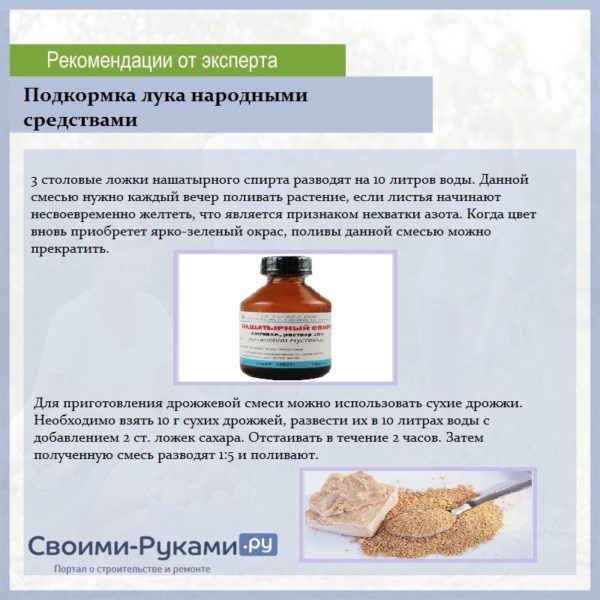

Advice! With insufficient air humidity or excessive watering, the leaves of the culture begin to turn yellow and curl - in this case, it is necessary to find and eliminate errors in the care, otherwise it may die.

